A wedge is placed on a smooth horizontal surface. One side of the wedge is curved into a circular quadrant of radius R. An insect crawls on the circular part with a constant speed v. A force F is applied on the wedge so that it (wedge) remains stationary at all the times. The value of F when the radial line of the position of the insect makes an angle θ with the horizontal is
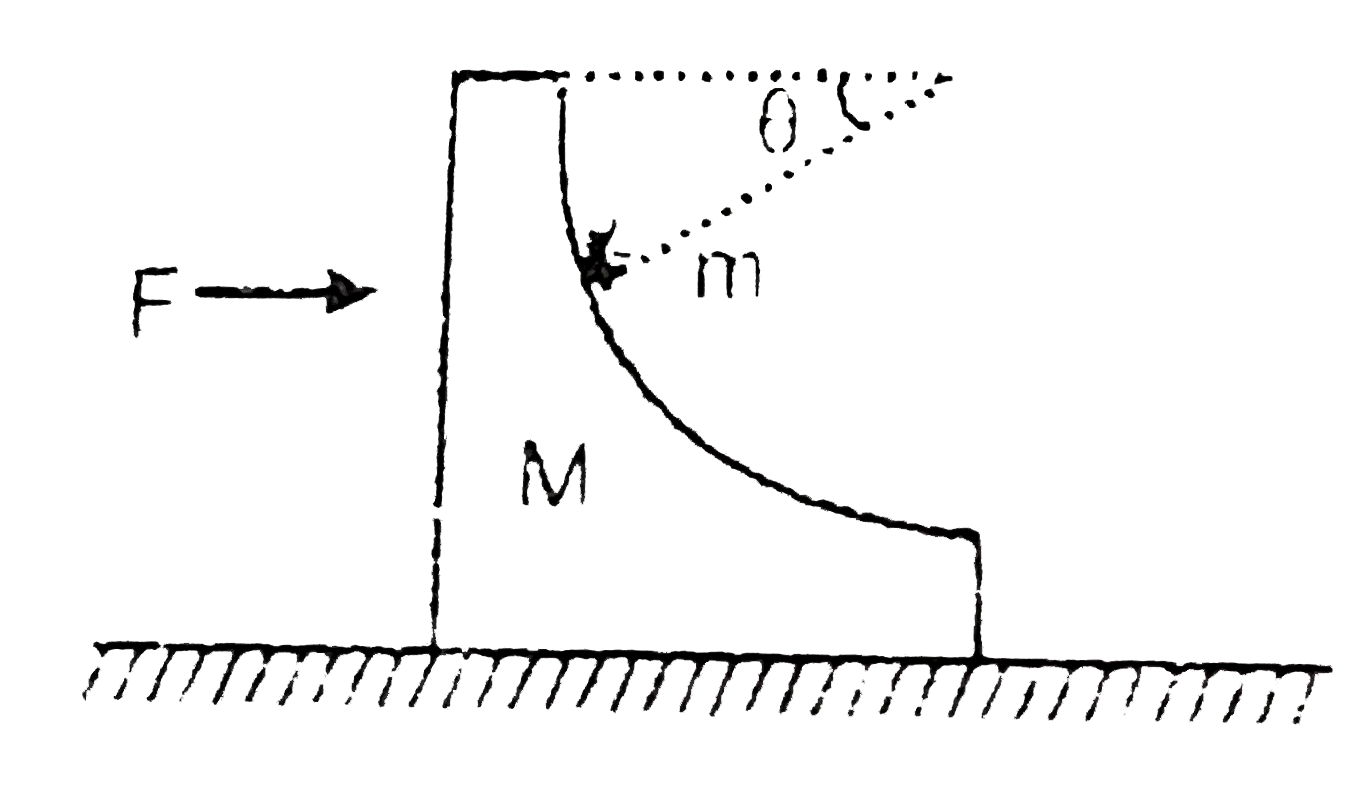
0
mv2Rcosθ
(m+M)v2Rcosθ
mv2Rcosθ
The correct Answer is:B
Taking the wedge + insect as system and applying. Newton's II law in horizontal direction
F=m(V2R.cosθ)+M×0
F=m(V2R.cosθ)+M×0.
Topper's Solved these Questions
- DAILY PRACTICE PROBLEMBook:RESONANCEChapter:DAILY PRACTICE PROBLEMExercise:DPP No.54
Explore 9 Videos
- DAILY PRACTICE PROBLEMBook:RESONANCEChapter:DAILY PRACTICE PROBLEMExercise:DPP No.55
Explore 9 Videos
- DAILY PRACTICE PROBLEMBook:RESONANCEChapter:DAILY PRACTICE PROBLEMExercise:DPP No.52
Explore 9 Videos
- CURRENT ELECTRICITYBook:RESONANCEChapter:CURRENT ELECTRICITYExercise:High Level Problems (HIP)
Explore 21 Videos
- ELECTRO MAGNETIC WAVESBook:RESONANCEChapter:ELECTRO MAGNETIC WAVESExercise:Exercise 3
Explore 27 Videos
Similar Questions
What force should be applied on the wedge so that block over it does not move? (All surfaces are smooth)

View SolutionA wedge of mass M makes an angle θ with the horizontal. The wedge is placed on horizontal frictionless surface. A small block of mass m is placed on the inclined surface of wedge. What horizontal force F must be applied to the wedge so that the force of friction between the block and wedge is zero ?
View Solution
Knowledge Check
(p∧q)→((r∧q)∧p) is a
ATautologyBContradictionCneither contradiction nor tautologyDNone of theseAll surfaces are smooth. The acceleration of mass m relative to the wedge is
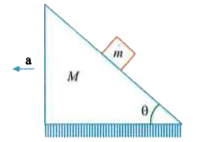 AgsinθBgsinθ+acosθCgsinθ−acosθDacosθ
AgsinθBgsinθ+acosθCgsinθ−acosθDacosθAll surfaces are smooth The acceleration of mass m relative to the wedge is
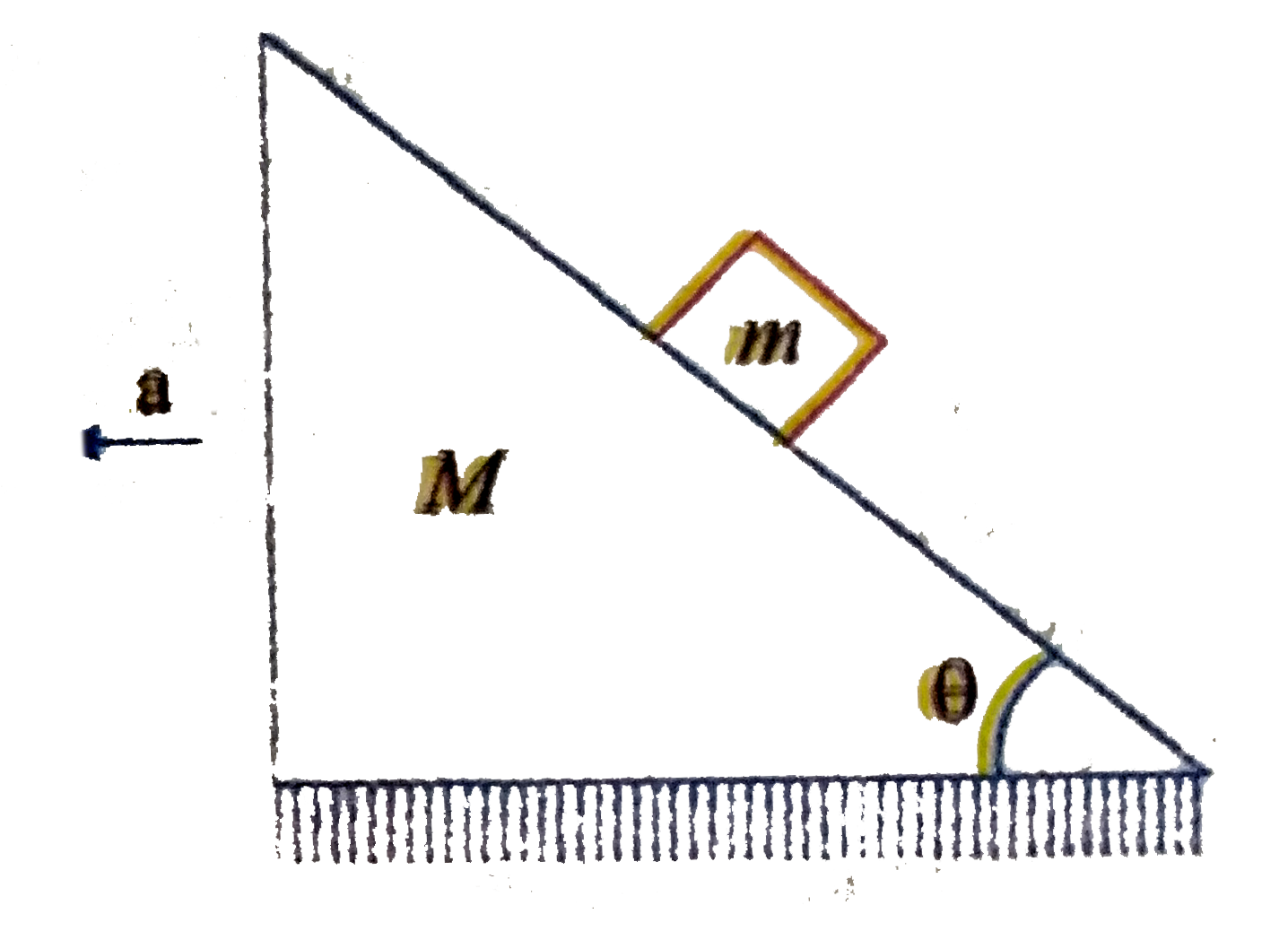 .AgsinθBgsinθ+acosθCgsinθ−acosθDacosθ
.AgsinθBgsinθ+acosθCgsinθ−acosθDacosθ
A wedge with mass M rests on a frictionless horizontal surface A block with mass m is placed on the wedge. There is no friction between the block and the wedge. A horizontal force f is applied to the wedge. What magnitude F must have if the block is to remain at constant height above the table top?
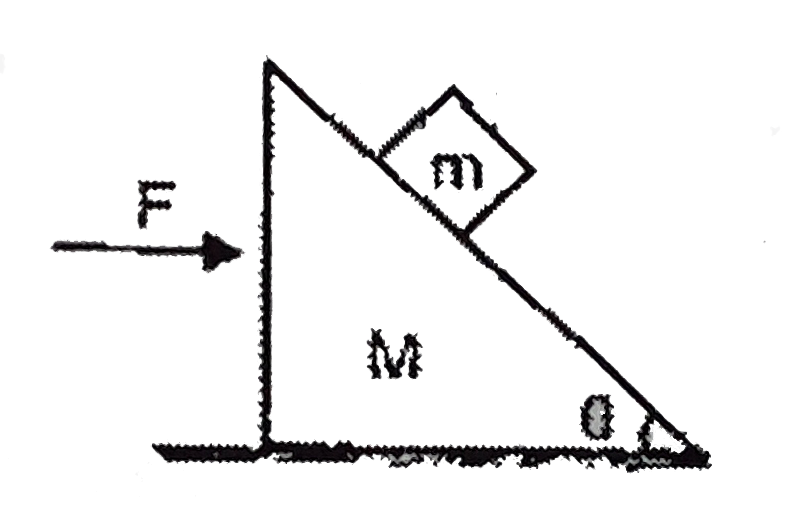
View SolutionA block is placed on a rough wedge.The block will be stationary relative to wedge if acceleration of wedge a is?
View SolutionA wooden wedge of mass M and inclination anlgle(α) rest on a smooth floor. A block of mass m is kept on wedge.A force F is applied on the wedge as shown in the figure such that block remains stationary with respect to wedge So, magnitude of froce F is
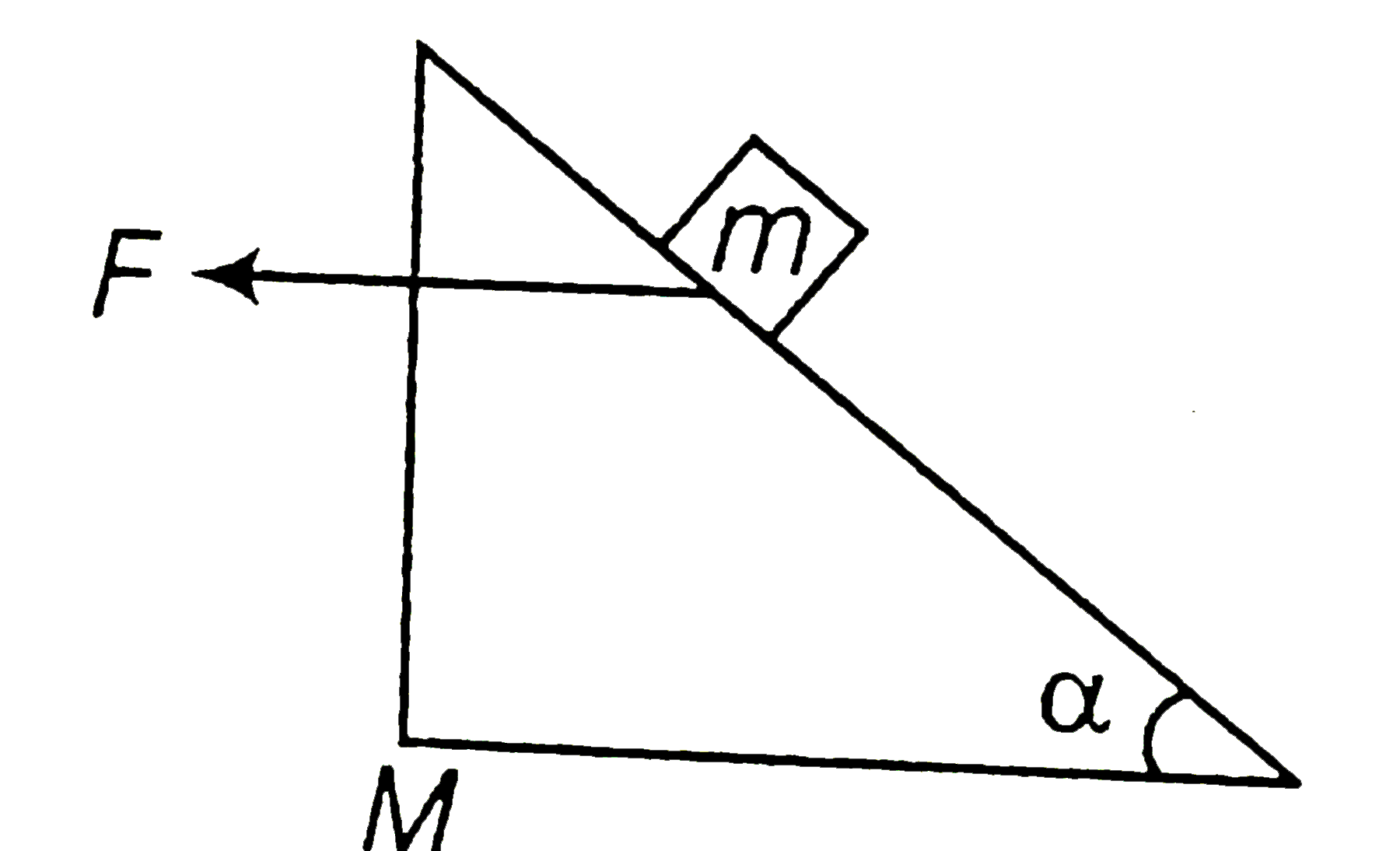
View SolutionIn the figure heavy mass m moves down the smooth surface of a wedge making an angle α with the horizontal. The wedge at rest t=0 is on a smooth surface. The mass of the wedge is M the direaction of motion of the mass m makes an angle β with the horizontal then, Tanβ is
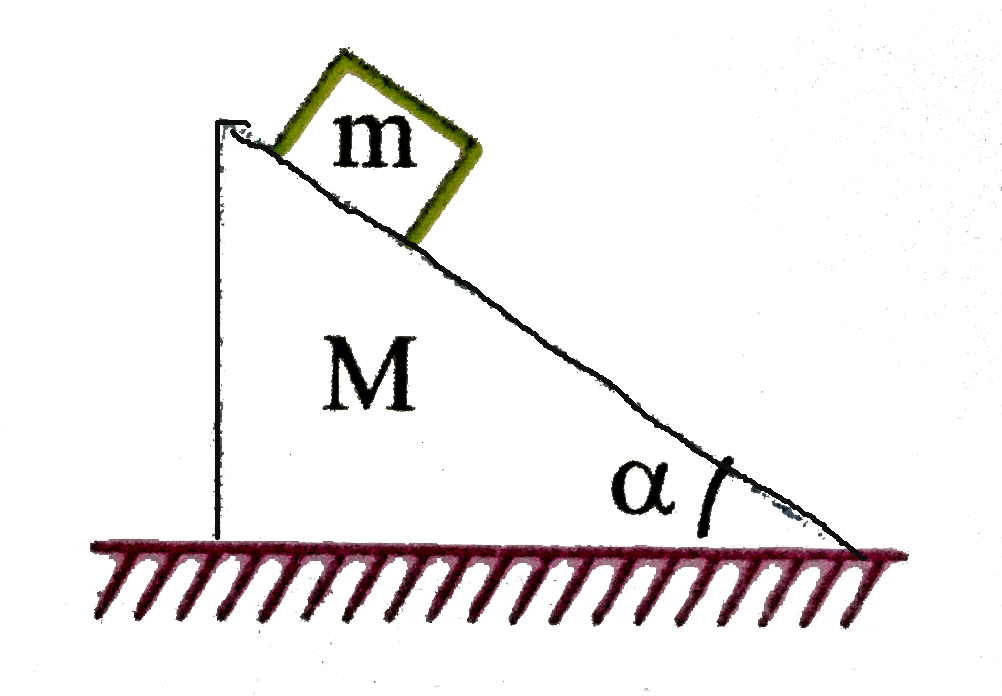 .
.
View SolutionA triangular wedge is placed on smooth horizontal surface. A block is placed on wedge as shown in the figure. Coefficient of friction between block and wedge is μ. Initially system reamins at rest.

View Solution

